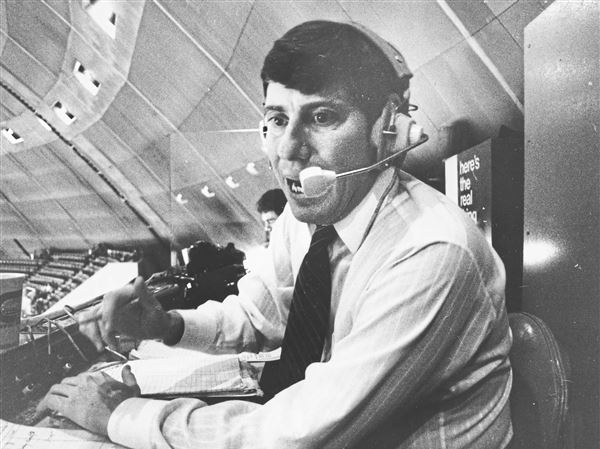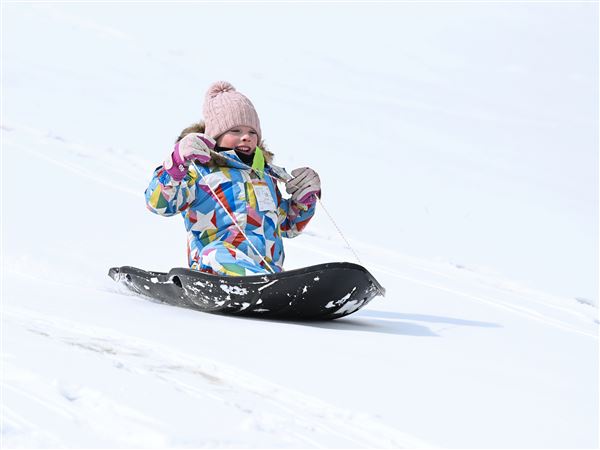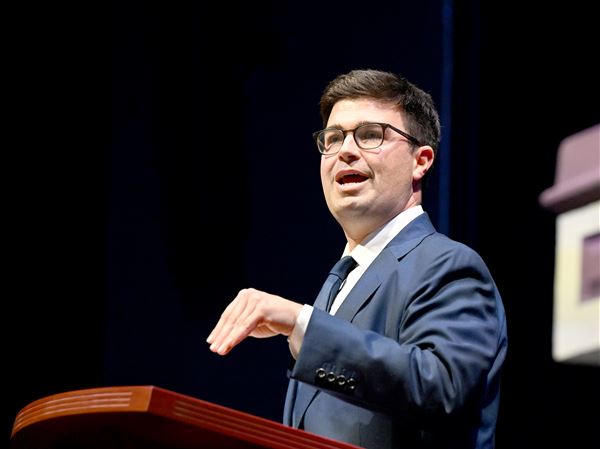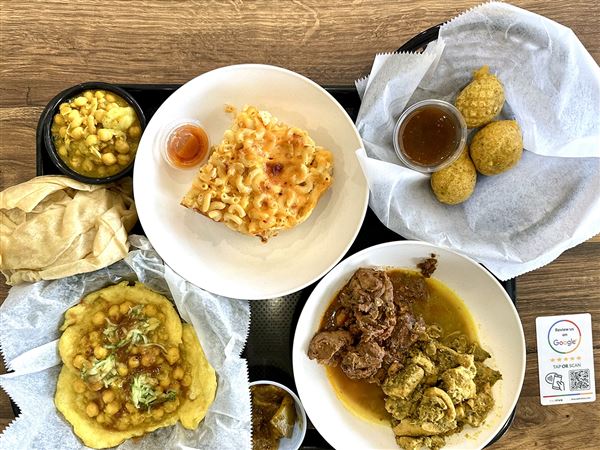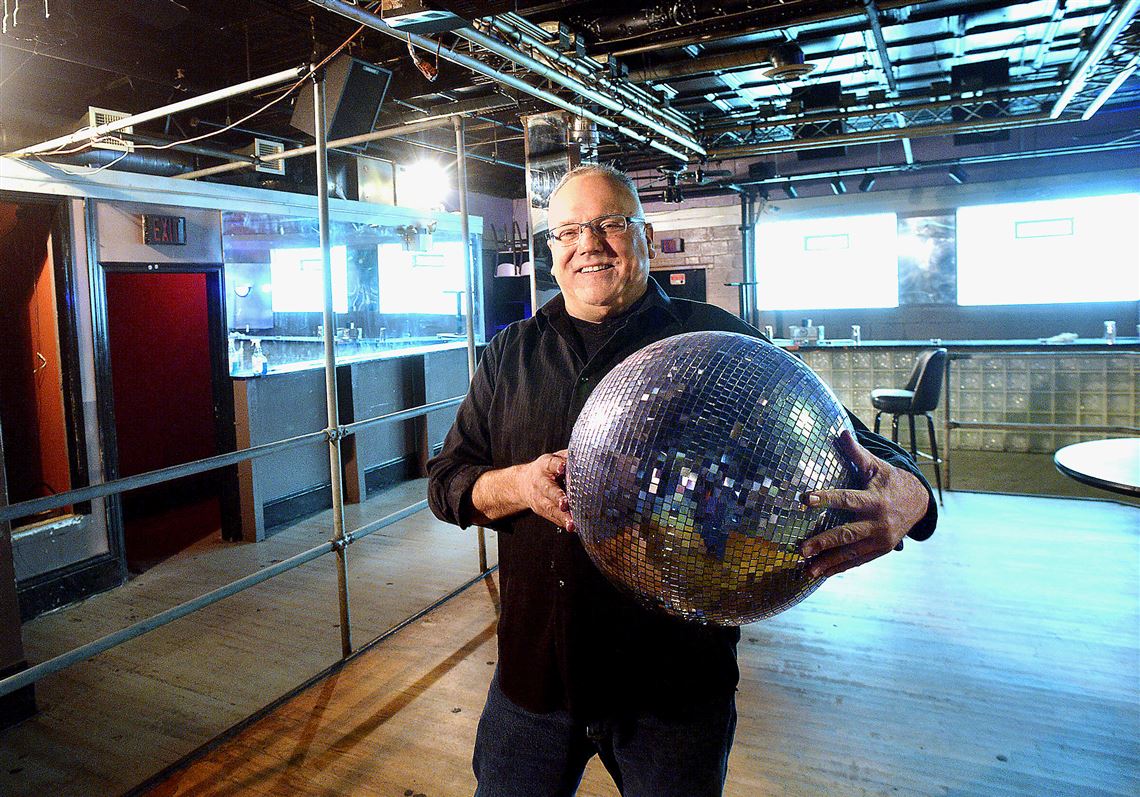When the Downtown bar Pegasus closed in 2009, its owner, Scott Noxon, tried to keep it going by merging it with his other bar, the Eagle on the North Side.
But Pegasus, popular among young gay men, never took off at the Eagle, where the luster was fading even for its more mature regulars. By then, everyone could connect on the Internet.
Mr. Noxon closed the Eagle in 2012 after 18 years and put its grand four-story home, and its liquor license, up for sale.
At the end of McClure Avenue in Marshall-Shadeland, it is tight up against the massive arch that underpins the California Avenue bridge. The road winds under the bridge and a railroad overpass, past vacant lots, a small diner, a clutch of homes and an old church.
To the west is Beaver Avenue and the industrial zone of Chateau.
Mr. Noxon’s building was originally to have been a department store, designed by the notable local architect Frederick G. Scheibler Jr. and built in 1902, two blocks from a very different Beaver Avenue — as thriving as East Carson Street on the South Side is today. The store ended up being a hotel, with owner Robert Mitchell’s initials carved into a decorative oval stone scroll on the facade.
Cast-iron columns and crossbeams support ceilings covered with decorative stamped tin. The facade appears to have been altered in the 20th century, with abbreviated windows.
From 1942 until Mr. Noxon bought the building in 1993, it was a Polish fraternal club.
Mr. Noxon reports having some interest for reuse as an apartment building, a social club and a gentleman’s club. His pick would be a craft brewery, in large part to sell the license with the property, he said.
Through the ’90s, the Eagle drew from the region and beyond to its second-floor dance club, third-floor leather scene and fourth-floor drag shows. Pool tables and dart boards were on the first floor.
In 2007, Mr. Noxon bought Pegasus, a club on Liberty Avenue that was starting to lose its pop.
“It had been such a fun, fun bar,” he said. “I thought I could turn it around.”
Two years later, he moved everything that was Pegasus to the Eagle, “trying to combine Pegasus’s good Friday nights with the Eagle’s good Saturdays, but the young guys didn’t like the creepy old men and the older guys didn’t like brats running around.”
“There’s nothing like the Eagle out there now, nothing like Pegasus,” said Harrison Apple, co-director of the Pittsburgh Queer History Project, an oral history and media archive. “Those are clubs of a bygone era. Everyone over 30 was probably considered a creepy old man” to a Pegasus regular.
“When it was hot, it was really hot,” Mr. Noxon said of the Eagle, estimating the best run was 1995 into the early 2000s, when he employed 14 bartenders. “The Internet killed this business.”
“People don’t go out like they used to,” said Jack Putnak of Charleroi, an Eagle regular in the ’90s. “But I remember standing in line for an hour just to get in. All four floors would be packed. You couldn’t move. You had to slide by people on the steps.”
He said licenses plates from Ohio, Maryland, Pennsylvania and West Virginia would fill the parking lot across the street.
“There were two or three people the last night he was open,” he said. “It was sad.”
Mr. Noxon had tried raves, only to have kids punch holes in the walls. He had nationally known drag acts, including The Lady Chablis, who was featured in the movie “Midnight in the Garden of Good and Evil.” He had Halloween parties, theme parties.
“The neighborhood wasn’t always too happy about us,” he said. “We had a few complaints about noise.”
He paid $61,000 for the building in 1993 and sold it in 1998, when it was at its peak, for $148,000. The new owners kept it open as the Eagle, but Mr. Noxon bought it back three years later.
He spent a quarter of a million dollars renovating it, “but I can’t figure out how the walls [on the fourth floor] got to be fuchsia,” he said.
Asked why he bought it back when it was waning, he said, “ … I love this old building, but I can’t do it anymore.”
First Published: April 20, 2015, 4:00 a.m.
